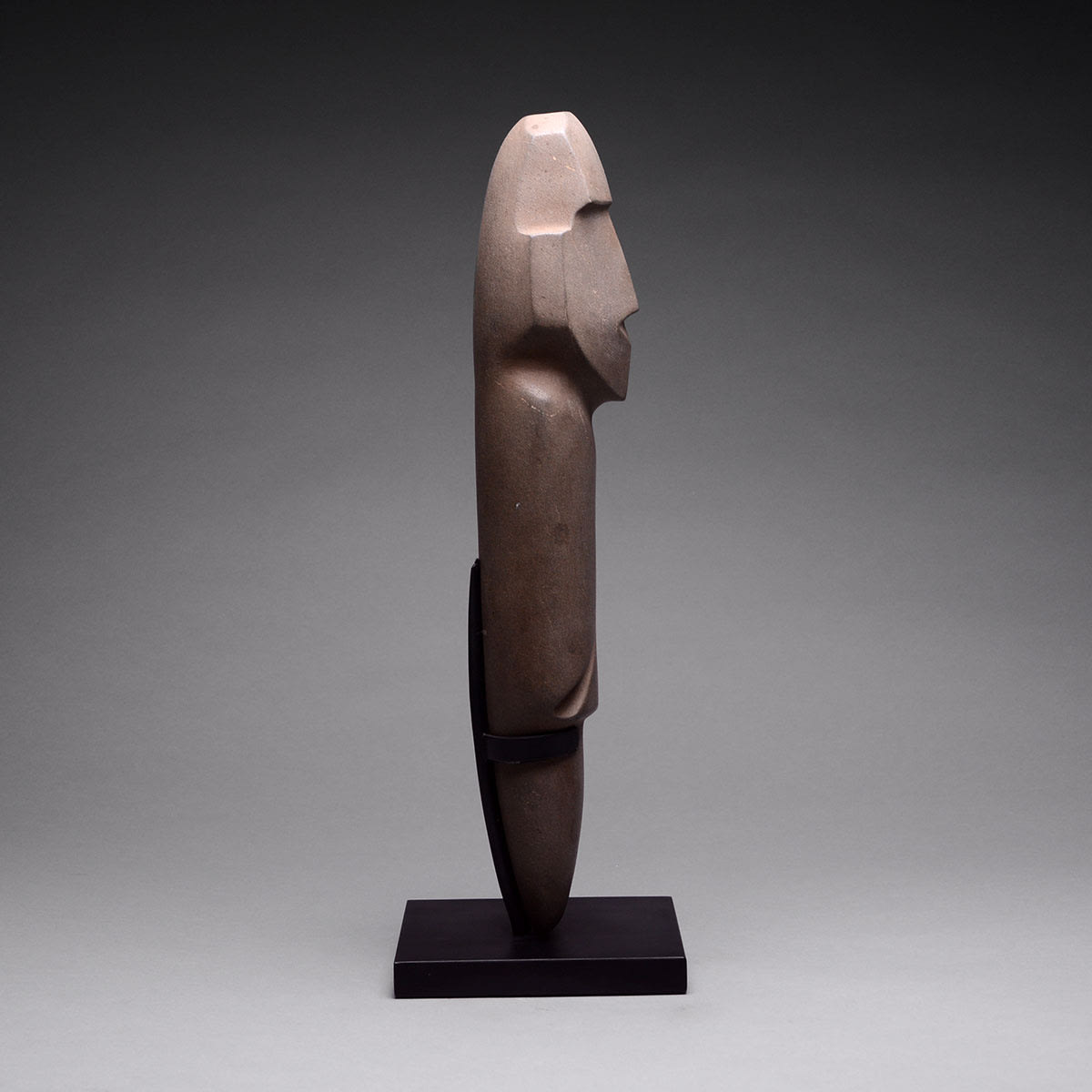Mezcala Stone Idol, 300 BCE - 300 CE
Stone
43.2 x 11.4 cm
17 x 4 1/2 in
17 x 4 1/2 in
CK.0050
Further images
Recovered from dedicatory caches in Guerrero, this sculpture of a human figure is a mysterious artistic product of Mezcala culture's obsessive votive Celt cult. Mezcala was a stone-centered culture that...
Recovered from dedicatory caches in Guerrero, this sculpture of a human figure is a mysterious artistic product of Mezcala culture's obsessive votive Celt cult. Mezcala was a stone-centered culture that is considered as pre-Olmec. The sculptors of this period carved their votive offerings out of hard stones such as andesite and serpentine. This sculpture of a human figure is smoothly carved out of beautiful dark-green stone. The figure is carved with a bold simplicity which distinctly defines the face, eyes, and hands. Although ancient, its minimal quality evokes a sense of modern minimal abstraction which heightens the sculpture's artistic quality. Mezcala sculptors were driven by the impact of sheer physical necessity and produced the stone carvings for their obsessive rituals in mass quantity. Though produced in great quantity, the sculptors carved the hard, unyielding stone with absolute sureness and special sculptural sensitivity. Each mark, each indentation is a precious outcome of earnest carving that describe the features of the figure. Remarkable in its unusually large size, physical presence, and abstract features, the sculpture appeals to our senses even today.
This sculpture belongs to the M-6 type of Mezcala stone sculptures of human figures. The M-6 type is defined by the construction of its facial planes: they are almost completely flat, with an angle formed by the intersection of the two planes under the forehead becoming the nose extending from forehead to chin. The mouth is a rhomboidal slit.
This sculpture belongs to the M-6 type of Mezcala stone sculptures of human figures. The M-6 type is defined by the construction of its facial planes: they are almost completely flat, with an angle formed by the intersection of the two planes under the forehead becoming the nose extending from forehead to chin. The mouth is a rhomboidal slit.
Provenance
Guerrero, Mexico1
of
411







